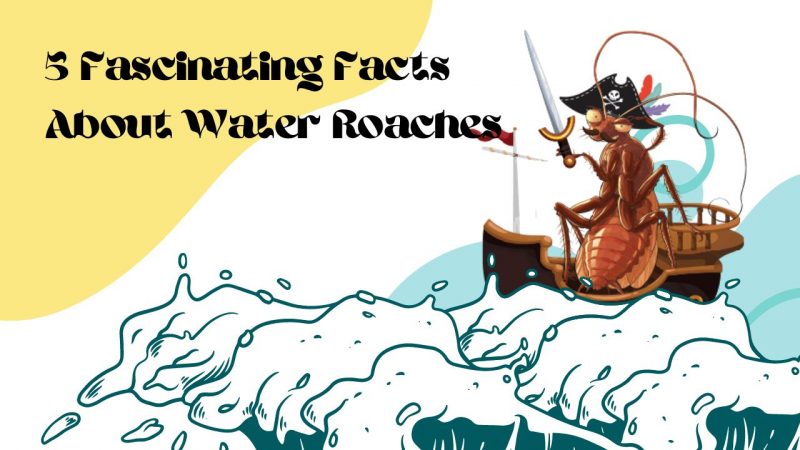Water roaches, also known as giant water bugs. They are not bugs – but a species of cockroaches. They are part of the peridomestic cockroaches – a type of cockroach living outside your home. They are reddish brown to dark brown in color and can grow up to 1-5 inches long (depending on the order). They are attracted to damp and darker areas like the kitchen, bathroom, basement, etc.
With time they have acquired many names – Palmetto bugs, True bugs, Toe-biter, and many more. Water roaches include – Oriental cockroaches, Smoky brown, and American cockroaches. They might not sound fearsome, but they can cause lots of trouble if they are in your home. But what causes them to invade the house?
Well, water roaches usually do not invade the home. However, when they do – they search for food. Also, they will likely enter your home if you live near a water body. Hence, keeping your sink area and bathrooms clean and tidy is important. Also, ensure to fix any water leakage. With so many species of cockroaches, water roaches have some amazing characteristics – read below to know more about them.
5 Fascinating Facts About Water Roaches
Below are some amazing facts about water bugs –
It is the Largest True Bug (Member of Hemiptera Order)
Water roaches are the largest bugs. They grow to 5 inches long and are mainly common in Northern South America.
Giants Water Roaches Can Get Cannibalistic
A hungry giant water bug can eat almost everything it can get its claws on – sometimes its babies and other roaches’ babies (only when they are starving). Hence, they are said to have cannibalistic characteristic. Female Lethocerus are also known to destroy the egg clutches deposited by other females when there are not enough males with good egg-laying grounds. It is also seen they eat others unless food is scarce.
Giant Water Roaches Mating Can Take Several Hours
In the back brooding giant water bugs, mating is a long process. First, the males do a little push-up in the water, which seems like a signal or vibration to which the females respond. Once they find each other, they mate. Once they are done, the female climbs on the back of the male water roaches and lays eggs. Then, the male shakes her off, and they start mating again. The mating process goes on for a very long time until most of the back area of the male is covered with eggs. They take approximately 6 hours to mate and lay all of the eggs.
Not all Giants Water Bugs are Giant
Belostoma Parvum, a giant water roach from northern South America, can grow to less than a centimeter. Hence, it is not a Giant Water Bug. Some of the species are very small and are not really ‘giant’ at all. If you see them munching on a mealworm, the worm is bigger than them.
Giant Water Roaches Have Skilful Flood-Avoidance Behavior
If a huge flood comes their way, water roaches crawl out of the water before it floods. It takes shelter away from the stream or river; once the flood passes, they return to the river and return to its daily activities. Dr. Dave Lytle recorded a video where he artificially stimulated the flood using a water hose, and the water roach is seen to get out of the water until the flood is gone.
Conclusion
Aren’t these water roaches adorable? Though some of you are scared of them – and at times, you must be. This is because they carry disease-carrying bacteria and might contaminate your food, causing food poisoning. They usually do not invade your homes, but when they do, ensure to get rid of them.
FAQs
Q1. Can water roaches bite you?
Ans. When they do not find food, they tend to bite you.
Q2. What diseases do water roaches carry?
Ans. The following are the diseases that water roaches carry –
1. Cholera
2. Giardia
3. Leprosy
4. Dysentery
Q3. What eats water roaches?
Ans. The following animals eat water bugs –
1. Birds
2. Crayfish
3. Wasps
4. Frogs
5. Bullfrogs
Q4. Can water bugs fly?
Ans. Water bugs or oriental cockroaches do not have full-sized wings. Hence, they cannot fly.
